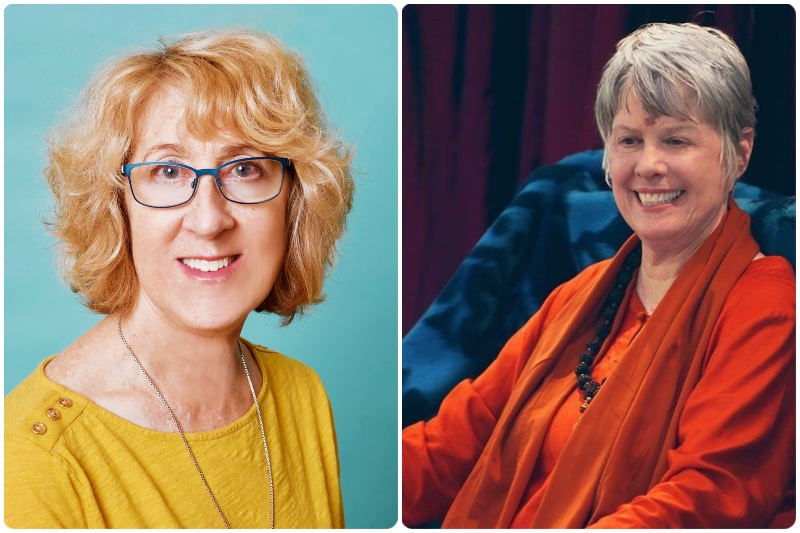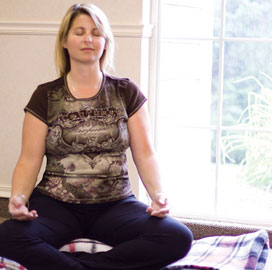 by Vidyadevi Stillman & Swami Nirmalananda Saraswati
by Vidyadevi Stillman & Swami Nirmalananda Saraswati
It is a profound yogic accomplishment to still your body and your mind. This is actually the purpose of all the poses and breathing practices — to give you the experience of perfect, ease-full stillness. How peaceful! How blissful!
In Shavasana, yoga’s relaxation pose, your body lies completely motionless, yet your mind can still be racing and your emotions churning. We know that the first Shavasana in class is sometimes the hardest pose of your whole class. You could be lying physically still because you don’t want to disturb your neighbors, but inside there is no stillness. You have brought your body to a halt yet your inner speed continues.
From time to time this happens for anyone. Yet yoga says that if you just keep your body in stillness, your mind is going to slow down.
Sthira sukham aasanam — Patanjali’s Yoga Sutras 2.46
The (yoga) pose is motionless and easy.
 While this sutra is really about the seated poses that lay the foundation for meditation, it applies to every yoga pose. In every pose, you are looking for that point of sthira (absolute motionlessness) and sukha (complete ease). When that happens, something more happens. It is the “something more” of yoga that happens. What this means is, just like the researcher said, “…your mind completely switches off.” That is the beginning of everything!
While this sutra is really about the seated poses that lay the foundation for meditation, it applies to every yoga pose. In every pose, you are looking for that point of sthira (absolute motionlessness) and sukha (complete ease). When that happens, something more happens. It is the “something more” of yoga that happens. What this means is, just like the researcher said, “…your mind completely switches off.” That is the beginning of everything!
Even when your first Shavasana is hard for you, your second Shavasana is quite different — a little slice of heaven! This is because all the other poses got you ready for Shavasana. The ultimate purpose of all those other poses is to get you ready for the stillness and for what happens in that profound inner stillness.
While you may not always hear the words being said, our Guided Awareness in the final Shavasana ends with words that point you inward:
Being aware of your whole body…
or being aware of awareness itself…
or follow awareness into its source…
Rest in That.
 That stillness and ease, which began with your body, gives you more, beginning with your mind becoming still. This is not merely a deep relaxation of your body. It’s not merely a respite from your thoughts and emotions. This is a tangible opening to something more, something greater, something more core to your being, something more essential — an opening to the something that is called your Essence. It’s called svaroopa, your own Self.
That stillness and ease, which began with your body, gives you more, beginning with your mind becoming still. This is not merely a deep relaxation of your body. It’s not merely a respite from your thoughts and emotions. This is a tangible opening to something more, something greater, something more core to your being, something more essential — an opening to the something that is called your Essence. It’s called svaroopa, your own Self.
Medical literature has been validating the health benefits of relaxation for 30 years or more. All this research has helped to give yoga’s practices a respectable name in the scientific community, for which the yogis are grateful. But consider this: yoga was doing those practices long before science thought they were respectable. Yoga has other practices that haven’t yet been documented by science. What might those practices do for you?
While science can tell us a little bit about the health benefits of deep relaxation, it hasn’t even begun to catch up with a yogi. Every yogi who begins the science of yoga is doing a scientific exploration within the multidimensionality of her or his own being, using proven methodologies, every time they do their own yoga practice. Do more Svaroopa® yoga.